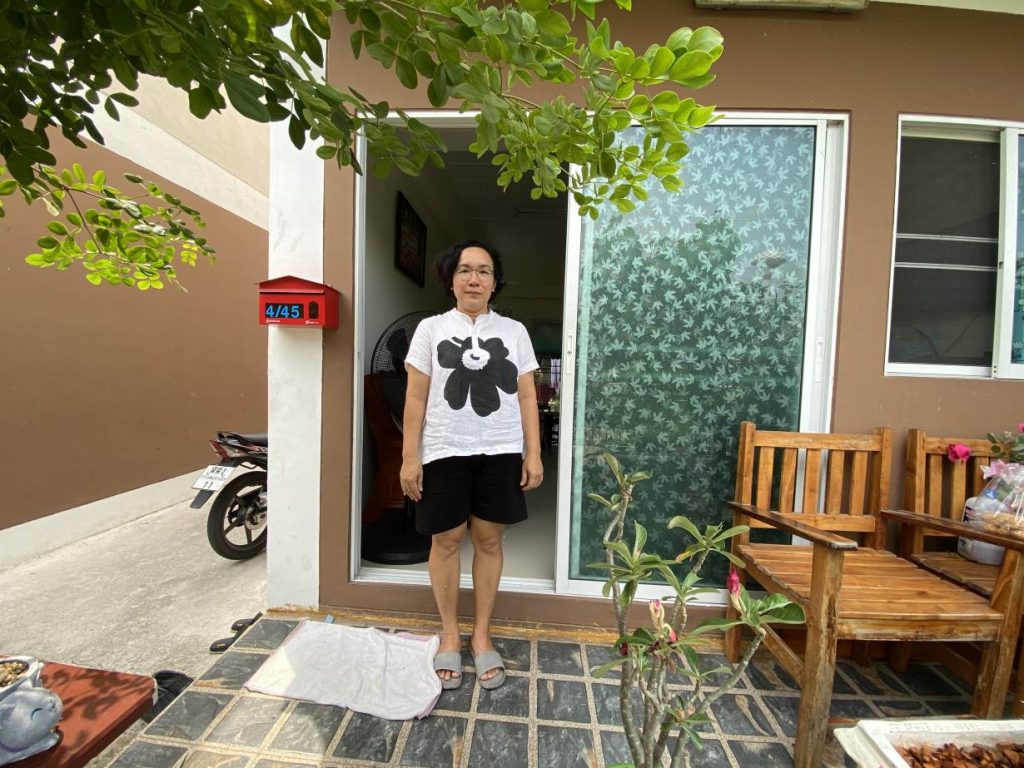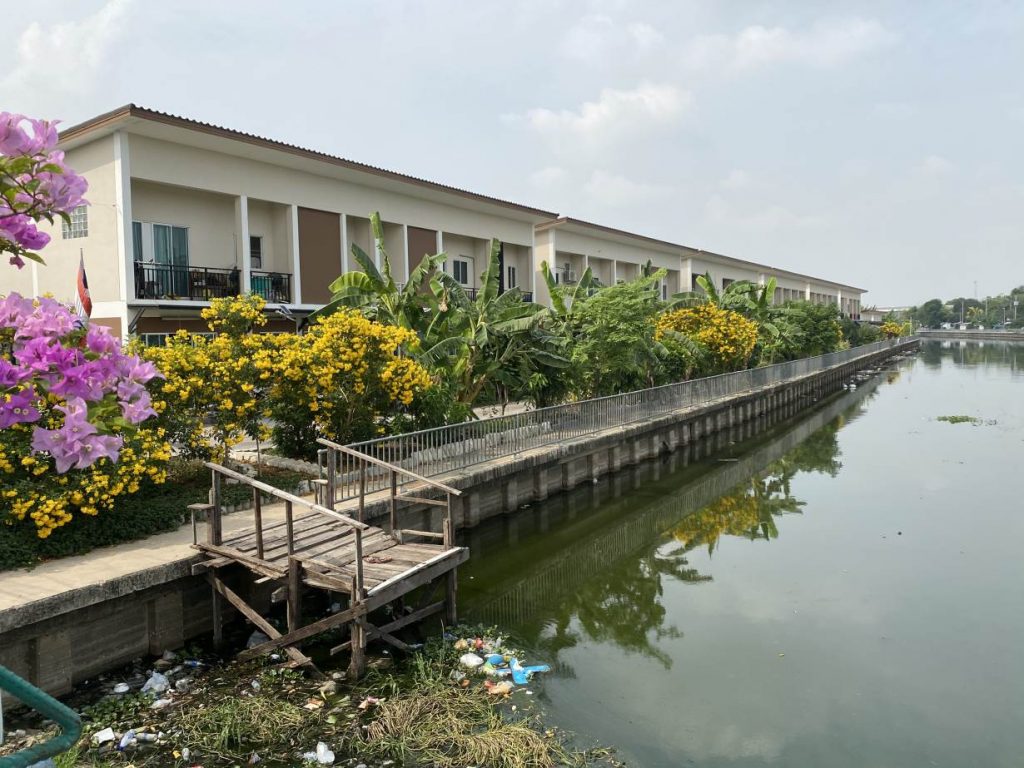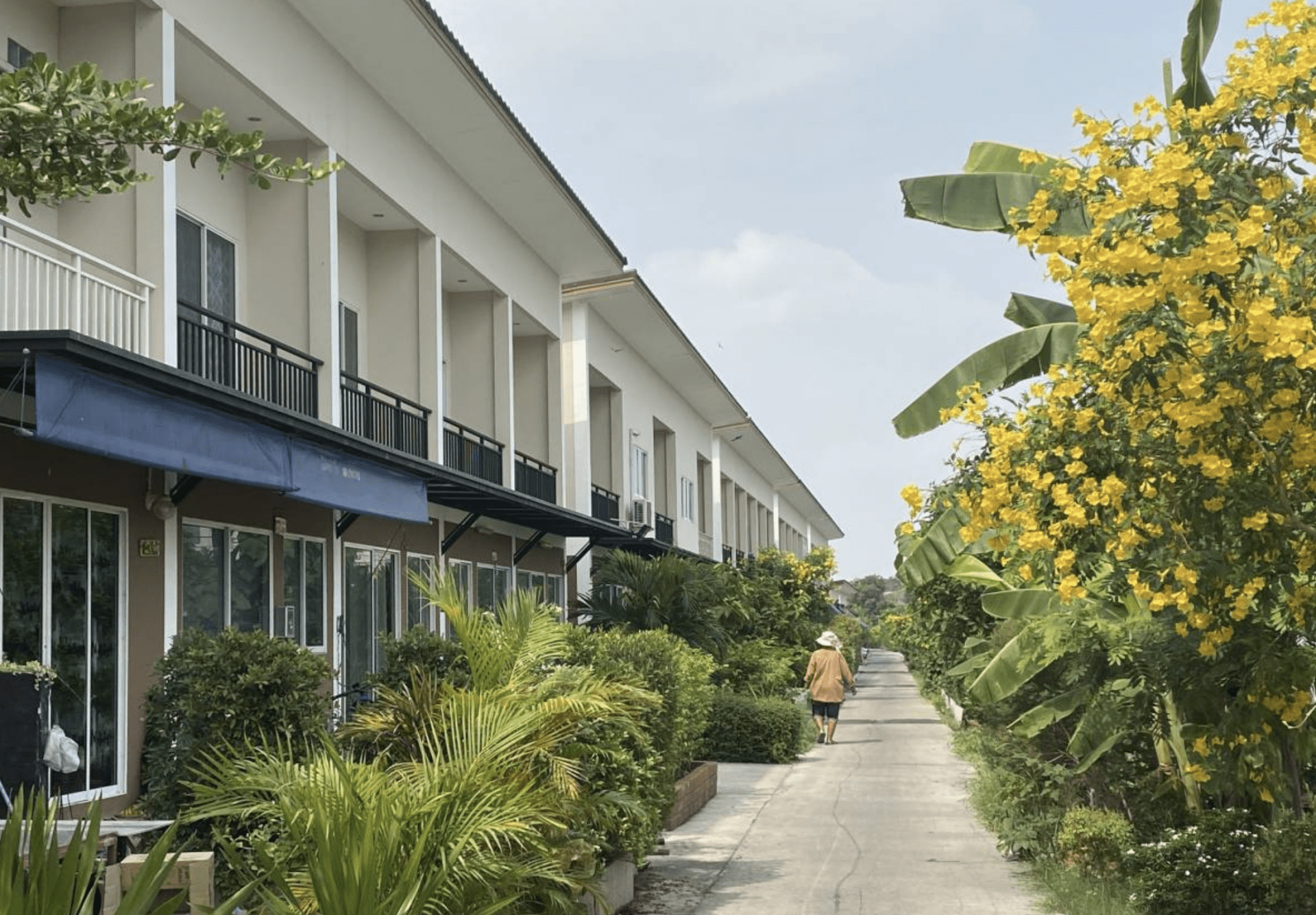Phatsanee Phutkaew lost nearly everything she owned 10 years ago when her modest canalside home in Bangkok was damaged by Thailand’s worst floods in decades, forcing the 55-year-old slum dweller and her neighbors to evacuate to emergency shelters.
Having waited nearly three months before they could go home, Phatsanee and her husband then met with officials who offered the community a plan to build new houses at a safer location.
Eight years later, almost 300 families moved about 3 km (1.9 miles) to homes built with loans from the Community Organizations Development Institute (CODI), a government agency, under the Baan Mankong – or collective housing – program.
“In the 30 years that we lived by the klong (canal), the city tried to evict us many times, and each time we protested and stayed put,” said Phatsanee, a leader of the Leab Klong Song Samakkhee community in Bangkok’s Sai Mai district.
Bangkok is forecast to be among urban areas worldwide that are hit hardest by rising temperatures, with nearly 40% of the city likely to inundated each year as soon as 2030, according to the World Bank.
That puts tens of thousands of people living by canals, the Chao Phraya river and in slums at risk, say authorities who have, in recent years, stepped up efforts to remove informal settlements and relocate residents.
The Baan Mankong program, launched in 2003, aims to help slum dwellers get secure housing with subsidies and cheap loans for buying or leasing land, and to build or upgrade their homes.
More than 130,000 urban and rural households across Thailand have benefited so far, including more than 15,000 households in canalside communities, according to CODI.
“The housing provides security for low-income families so that they can have continued access to jobs in the city, and the opportunity to get out of poverty,” said Angkhana Trantarathong, an international relations officer at CODI.
“This way community members can be responsible for their own development,” she told the Thomson Reuters Foundation.

Right to city
Worldwide, an estimated one billion people live in slums and informal settlements, often lacking access to utilities, and facing the risk of forced evictions, as well as worsening climate-change impacts including more frequent flooding.
Bangkok, built on the floodplains of the Chao Phraya River, was once known by the moniker Venice of the East because of its canal and river network, with migrants from rural areas often settling beside them so they could commute easily in boats.
But most of the city’s canals are now clogged with trash and sewage, and routinely flood the flimsy homes during the monsoon.
The Bangkok Metropolitan Administration has launched a plan to restore some of the city’s canals with electric ferries, higher embankments to prevent flooding, and by relocating canalside communities.
“Some people do not want to move – but we need to put pressure on them until they realise that they cannot live there anymore,” said Bangkok Governor Aswin Kwanmuang, who oversees urban planning initiatives for the city.
The federal government has raised subsidies for Baan Mankong and said it will build 1.2 million houses over the next 10 years for those who are relocated from alongside rivers and canals.
Under the program, communities form cooperatives and negotiate with private owners as well as the government to purchase or lease land, and decide on the housing design, as well as terms of the loan. Ownership is held collectively.
By pooling their resources in a savings and loans group, the community can access financing more easily than as individuals, said Supreeya Wungpatcharapon, an assistant professor at Kasetsart University who has studied social housing.
“This flexible mechanism where the poor can directly access funds is different from other development projects where money is held by the government authority,” she said.

Better future
Across the country, poorer residents including street vendors and slum dwellers face the constant threat of eviction in a push to beautify cities, and create parks and walkways for tourists and wealthier residents.
A plan to redevelop Klong Toey, the city’s biggest slum, has drawn opposition from its residents and human rights groups, who say it will separate the poor from their social networks and limit their ability to make a living.
“Better homes and living conditions are needed, but they must listen to the community and their needs,” said Prateep Ungsongtham, founder of the Duang Prateep Foundation that runs a charitable school in Klong Toey.
“If redevelopment happens without that, then there is no place for the poor people who serve the city,” she said.
While some residents resist resettlement or are too poor to afford the Baan Mankong plan, decisions are made collectively, and several projects include some units of free housing for single mothers or the elderly, said Angkhana at CODI.
In Phatsanee’s community in Sai Mai, the two-storey row houses cost residents nearly 300,000 Thai baht ($9,200) – after government subsidies of about 150,000 baht – with the amount being paid off in monthly instalments of 1,500-odd baht.
“We don’t have to worry about flooding during the rain, and my customers are happier coming to this salon because it’s bigger and brighter,” said Phatsanee.
A few miles away, the Kor Sor Bor Phattana community moved from their homes by a canal into single-storey and two-storey homes set well back from the canal in 2019.
The 58 brightly coloured homes with neat gardens, are on state-owned land that the community has leased for 30 years. Residents received a six-month moratorium last year on mortgage payments during lockdowns to control the coronavirus pandemic.
“We are all poor, and we were worried about paying back the loan,” said Bani Chaosuwanphan, 50, a community leader.
“But we wanted a better life for ourselves, a better future for our children, and these homes can give us that,” she said.
(Reporting by Rina Chandran @rinachandran; Editing by Kieran Guilbert. Thomson Reuters Foundation)







